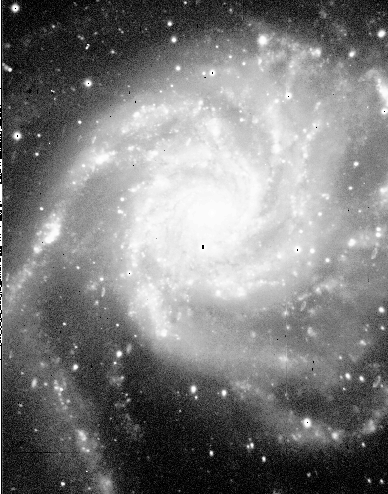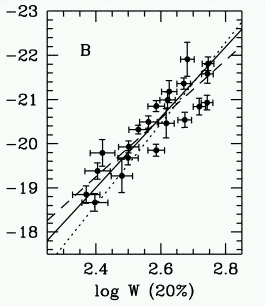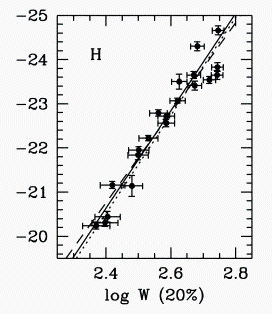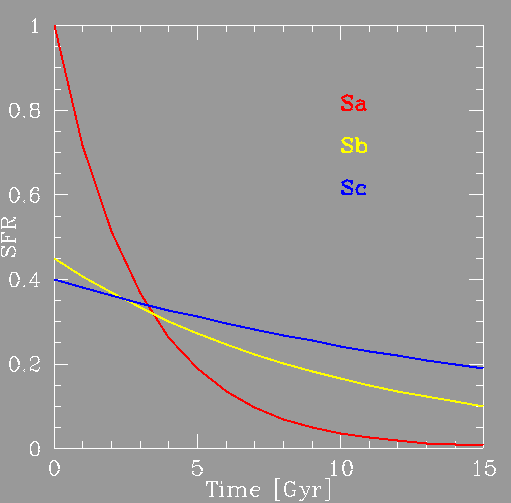As with the Milky Way, the surface brightness (flux per unit area) of spiral disks is described by an exponential law:
|
As with the Milky Way, the surface brightness (flux per unit area) of spiral disks is described by an exponential law: |
|
| Or, if we convert this to magnitudes per square arcsecond: |
Note that while the observed brightnesses and sizes of galaxies drop at larger distances, surface brightness does not change.
So we can measure the surface brightness of spiral
galaxies and learn immediately the luminosity density of the galaxy without
knowing the distance. Very useful!
Galaxies show a wide range in
central surface brightnesses; there is no preferred central
surface brightness. On the left is M101, a high surface brightness galaxy;
on the right is Malin 1, a low surface brightness galaxy.
 |
 |
| Spiral galaxies typically show flat
rotation curves. Dark Matter!
The luminosity of a spiral galaxy correlates with its rotation velocity: the Tully-Fisher Relationship
|
 |
|
First, remember what determines the circular
velocity:
|
 |
|
so that
|
|
|
we don't know the mass of a galaxy, but
we know its luminosity, so let's make up a quantity called the mass-to-light
ratio:
|
 |
|
now remember that surface brightness is
luminosity over area:
|
 |
|
or, solving for R:
|
 |
|
OK. Now, mass is mass:
|
|
|
so equate our two mass expressions:
|
 |
|
substitute in for R:
|
 |
|
and solve for L:
|
 |
Whew! So Tully-Fisher works if surface brightness time mass-to-light-ratio squared is constant. In other words, the stars and the dark matter are somehow linked.
Why would that be true?But this tells us something fundamental about how galaxies formed. Any model for galaxy formation must explain the Tully-Fisher relationship.
We don't understand it, but it seems to work!
OK, so let's look at the Tully-Fisher relationship for
nearby galaxies using different wavelengths:
|
|
|
|
 |
 |
 |
|
|
|
Question: Why would the relationship change depending
on what wavelength you look at?
We find that disks of spiral galaxies are generally bluer in their outer regions -- this is called a color gradient. What does this tell us about the stellar populations in galaxies?
We also find the bulges of spirals are redder than the disks. What does this tell us?
We can measure the global star formation rate in disk galaxies by using:
The colors and gas contents of spirals show trends along the Hubble sequence: Sa galaxies are redder, and have a relatively low gas:star ratio. Sc galaxies are bluer, and have a high gas:star ratio.
Typically this is explained by different star formation histories:
